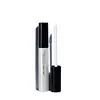What's inside
What's inside
 Key Ingredients
Key Ingredients

 Benefits
Benefits

 Concerns
Concerns

No concerns
 Ingredients Side-by-side
Ingredients Side-by-side

Water
Skin ConditioningDipropylene Glycol
HumectantButylene Glycol
HumectantSorbitol
HumectantAlcohol
AntimicrobialPolyvinyl Acetate
Emulsion StabilisingGlycerin
HumectantCarbomer
Emulsion StabilisingPhenoxyethanol
PreservativeEthylhexylglycerin
Skin ConditioningMethylparaben
PreservativePolyvinyl Alcohol
Potassium Hydroxide
BufferingArginine
MaskingXanthan Gum
EmulsifyingZiziphus Jujuba Fruit Extract
Skin ConditioningSimethicone
EmollientTrisodium EDTA
Tocopherol
AntioxidantWater
Skin ConditioningButylene Glycol
HumectantDipropylene Glycol
HumectantTromethamine
BufferingHydroxyacetophenone
AntioxidantCarbomer
Emulsion StabilisingCaprylyl Glycol
EmollientSaccharomyces Cerevisiae Extract
Skin ConditioningDisodium EDTA
1,2-Hexanediol
Skin ConditioningGlycerin
HumectantEthylhexylglycerin
Skin ConditioningCynanchum Atratum Extract
Skin ConditioningDipotassium Glycyrrhizate
HumectantBiotin
AntiseborrhoeicCaffeine
Skin ConditioningMyristoyl Pentapeptide-4
Skin ConditioningLecithin
EmollientAvena Strigosa Seed Extract
Skin ConditioningMyristoyl Pentapeptide-17
Skin ConditioningPotassium Sorbate
PreservativeCitric Acid
BufferingAcetyl Hexapeptide-8
HumectantCopper Tripeptide-1
Skin ConditioningPalmitoyl Pentapeptide-4
Skin ConditioningWater, Butylene Glycol, Dipropylene Glycol, Tromethamine, Hydroxyacetophenone, Carbomer, Caprylyl Glycol, Saccharomyces Cerevisiae Extract, Disodium EDTA, 1,2-Hexanediol, Glycerin, Ethylhexylglycerin, Cynanchum Atratum Extract, Dipotassium Glycyrrhizate, Biotin, Caffeine, Myristoyl Pentapeptide-4, Lecithin, Avena Strigosa Seed Extract, Myristoyl Pentapeptide-17, Potassium Sorbate, Citric Acid, Acetyl Hexapeptide-8, Copper Tripeptide-1, Palmitoyl Pentapeptide-4
 Reviews
Reviews

Ingredients Explained
These ingredients are found in both products.
Ingredients higher up in an ingredient list are typically present in a larger amount.
Butylene Glycol (or BG) is used within cosmetic products for a few different reasons:
Overall, Butylene Glycol is a safe and well-rounded ingredient that works well with other ingredients.
Though this ingredient works well with most skin types, some people with sensitive skin may experience a reaction such as allergic rashes, closed comedones, or itchiness.
Learn more about Butylene GlycolCarbomer is a polymer of acrylic acid. Its main role is to create a gel consistency.
A high amount of carbomer can cause pilling or balling up of products. Don't worry, most products contain 1% or less of carbomer.
Dipropylene Glycol is a synthetically created humectant, stabilizer, and solvent.
This ingredient helps:
Dipropylene glycol is technically an alcohol, but it belongs to the glycol family (often considered part of the ‘good’ alcohols). This means it is hydrating and gentle on skin unlike drying solvent alcohols like denatured alcohol.
As a masking agent, Dipropylene Glycol can be used to cover the smell of other ingredients. However, it does not have a scent.
Studies show Dipropylene Glycol is considered safe to use in skincare.
Learn more about Dipropylene GlycolEthylhexylglycerin (we can't pronounce this either) is commonly used as a preservative and skin softener. It is derived from glyceryl.
You might see Ethylhexylglycerin often paired with other preservatives such as phenoxyethanol. Ethylhexylglycerin has been found to increase the effectiveness of these other preservatives.
Glycerin is already naturally found in your skin. It helps moisturize and protect your skin.
A study from 2016 found glycerin to be more effective as a humectant than AHAs and hyaluronic acid.
As a humectant, it helps the skin stay hydrated by pulling moisture to your skin. The low molecular weight of glycerin allows it to pull moisture into the deeper layers of your skin.
Hydrated skin improves your skin barrier; Your skin barrier helps protect against irritants and bacteria.
Glycerin has also been found to have antimicrobial and antiviral properties. Due to these properties, glycerin is often used in wound and burn treatments.
In cosmetics, glycerin is usually derived from plants such as soybean or palm. However, it can also be sourced from animals, such as tallow or animal fat.
This ingredient is organic, colorless, odorless, and non-toxic.
Glycerin is the name for this ingredient in American English. British English uses Glycerol/Glycerine.
Learn more about GlycerinWater. It's the most common cosmetic ingredient of all. You'll usually see it at the top of ingredient lists, meaning that it makes up the largest part of the product.
So why is it so popular? Water most often acts as a solvent - this means that it helps dissolve other ingredients into the formulation.
You'll also recognize water as that liquid we all need to stay alive. If you see this, drink a glass of water. Stay hydrated!
Learn more about Water